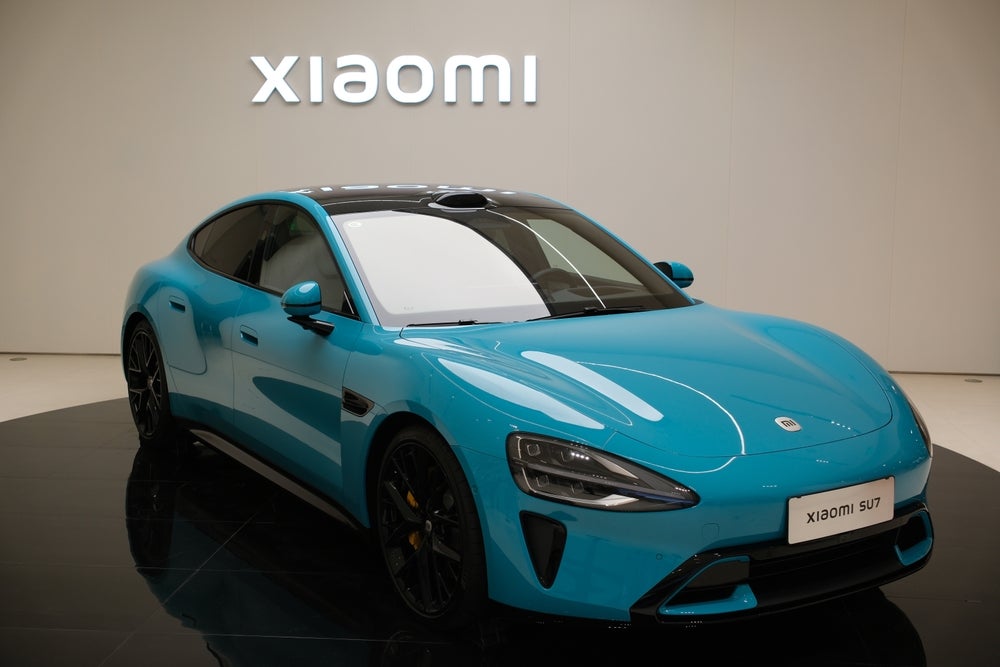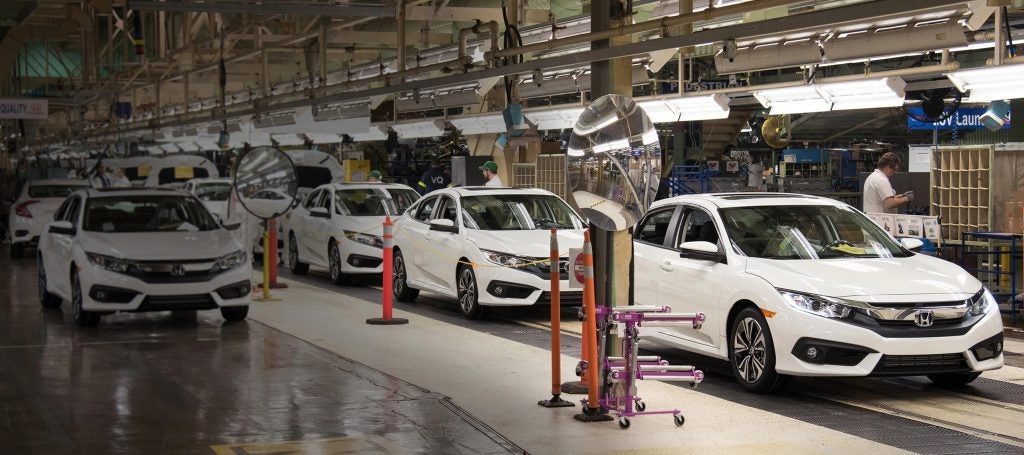This month in our Hands-On-Tech (HOT) reporting series*, we put the Honda HFT system to the test. Taking you through the top-spec connectivity features offered by manufacturers in detail, this HOT report series looks to benchmark the connectivity functionality of each manufacturer based on various test criteria. Honda concede that in-car connectivity hasn’t been its focus, and while some features hit the mark, others miss it by a good mile.
Display
The 7″ display screen has capacitive touch capabilities, with swipe, pinch and zoom functions—with and without gloved fingers. It’s responsive and customisable. The system settings allow the background colour of the display to be adjusted to a choice of five colours, including amber and violet. Though there’s no digital automated personalisation, there are ways to configure the menu display to make it less busy.
The Honda system integrates both Apple CarPlay and Android Auto. The ports are discreetly tucked away behind the main centre console, but once discovered this is actually rather convenient, in terms of storing the handset and keeping it out of the way while driving. There is also a Qi wirelessly charging pad for enabled handsets. Helpfully, there is a light to indicate when the handset is charging. CarPlay and Auto are configured for a right hand drive.
Switchgear
Honda has done a good job to hybridise control for climate, providing a choice for its broad customer base. The climate control is a combination of physical dials for fan speed and temperature and digital controls for airflow direction and on/off, which also have a physical presence.
Like the home button, the volume is controlled with electronic buttons integrated into the glossy touchscreen—such as that they are on the surface of the screen. There is also button action on the steering wheel instead of a rocker. Touchscreen buttons open up a window on the digital screen to control the volume with plus/minus controls. One dial would have been sufficient, so it seems a bit overkill.
See Also:
Voice Control
Honda has integrated a number of systems. The proprietary initial menu is provided by one supplier, or perhaps developed in-house. The voice sounds like a cross between British English and South African. When navigation is selected, the voice then changes to one familiar in other vehicles, as the navigation is provided by Garmin. This experience isn’t seamless and it isn’t easy to use. Furthermore, the accuracy is poor.
How well do you really know your competitors?
Access the most comprehensive Company Profiles on the market, powered by GlobalData. Save hours of research. Gain competitive edge.

Thank you!
Your download email will arrive shortly
Not ready to buy yet? Download a free sample
We are confident about the unique quality of our Company Profiles. However, we want you to make the most beneficial decision for your business, so we offer a free sample that you can download by submitting the below form
By GlobalDataAround 35 pre-programmed instructions help to navigate the voice control, yet the system isn’t intuitive. As a result, we scored the Honda voice control one out of ten for both natural use and accuracy, where 12 commands yielded poor or no response, taking into account syntax and response time.
Audio
There are a total of seven media output options, including DAB, FM, AM and bluetooth connection. The radio has 12 presets. There is basic manipulation of the levels of this high-powered” 11-speaker sound system in the settings menu, but the tech investment has very much been made in the display and the ADAS features.
Networking
In 2017, Honda North America signed an agreement with AT&T, a North American Mobile Network Operator (MNO) to create built-in 4G enabled in-car WiFi, allowing drivers and other passengers to tether their mobile devices to the vehicle’s (much stronger) data connection. This has yet to arrive in the UK, so to use the plethora of apps on that identified screen – including Aha by Harman and a web browser – one must first switch the engine off. Despite following these instructions, we still had issues getting the apps to work on the system—an error message asking for an update from the workshop popped up repeatedly. There appear to be around thirteen apps available as standard, though Honda continue to work to add to this portfolio and it’s not clear whether there are additional apps available.
Navigation
Provided by Garmin, the navigation is simple and easy to use. For Europe there are five years’ of free updates included with the Honda purchase. Setting a destination takes only five steps, which is below average for the vehicles tested thus far. As with other models, the Garmin system takes postcodes and street names, auto splits postcodes and offers the option to mute the voice guidance. Making one’s way back to the radio is a simple one-click shortcut from the physical switchgear.
Usefully, the points of interest include public conveniences. As a result the navigation scored three out of five for intuitive design across 20 inputs—we struggled with inputting a waypoint—and the maximum score of three for route accuracy, where three indicates the system found the multiple destinations with an accurate estimated time of arrival (ETA) and offered an intelligent route.
Telephony
This was one of the poorest experiences we have had because the proprietary telephony system uses the fairly difficult voice control system. As a result, the telephony system scored one out of five, for both clarity of call and ease-of-use. It didn’t import the contacts after several attempts and this further frustrated the use of the voice control. Useability also scored one out of five, where one indicates severe difficulty.
ADAS
The ADAS provisions are comprehensive in the Honda Civic as standard. Honda SENSING package includes autonomous emergency braking (known as Collision Mitigation), traffic sign recognition, lane departure warning and auto adaptive cruise control (known as intelligent adaptive cruise control). With the Sport Plus trim, blind spot and cross traffic monitoring are also included. We found the Lane Departure Warning and Lane Departure Assist generally only work when cruise control is engaged, though the cruise control was adaptively smooth in comparison with other models.
There is no parking assistance provision. However, the rear view parking camera is impressive, since it can toggle to a bird’s eye view to see how close the rear of the car is to objects to the rear.
Companion App and Telematics
Honda has the My Honda App which is an amalgamation of a number of features. It offers news about Honda’s progress in various models, including tech developments and records set. Under the ‘Services’ tab, users can see messages in their inbox from Honda, organise a test drive, service or call roadside assistance or customer support directly from the app. It can also search locally using the handset’s location services to find nearby dealerships.
The app does have integration with the vehicle, but this is through a dongle device that Honda must fit to the vehicle specifically. Our test vehicle did not have this feature enabled. Equally, though it also includes a user profile that can be set up for the main driver and family and friends. Honda has created a scored driving feature, where driving has been gamified.
Conclusion
Honda has historically put its technological know-how under the bonnet, making the Civic’s current package a fair compromise in context. The ADAS suite is a definite highlight of the tech package, but the in-car connectivity lacks a coherent workflow. Some areas are easy to use, with acceptable design, but other areas such as telephony and voice control and tethered connectivity are less straightforward, prompting preferred use of mirroring apps, Apple CarPlay and Android Auto.
*This article is an extract from a report that first appeared in our QUBE service. The QUBE article is accompanied by a comprehensive data sheet with our full evaluation of the Honda’s connectivity and HMI.







